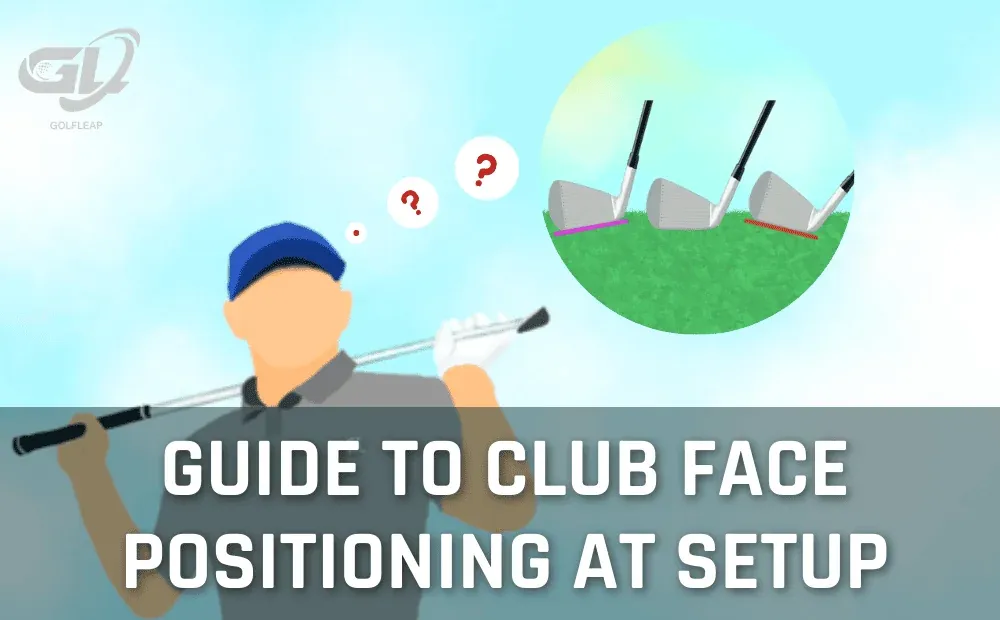
Consistency is the hardest element of golf. Some days feel like you’re “pointing and shooting,” while others feel like you’ve never touched a club before.
To eliminate more of these “helpless-feeling” days of golf, perfecting your golf swing setup by eliminating unnecessary variables should be your top priority.
Our breakdown will discuss how to get your clubface in the correct position at address for every type of shot so you can be sure your golf swing has the best chance for success!
Table of Contents
The Basic of a Correct Clubface Setup Position
Establishing a square clubface to your target is step number one for great golf shots.
“A ‘square‘ clubface to your target,” is golfing lingo for ensuring the sweet spot of your club is pointed at your target when placed behind the ball.
Visually, this is what a “square” club face to your target looks like.
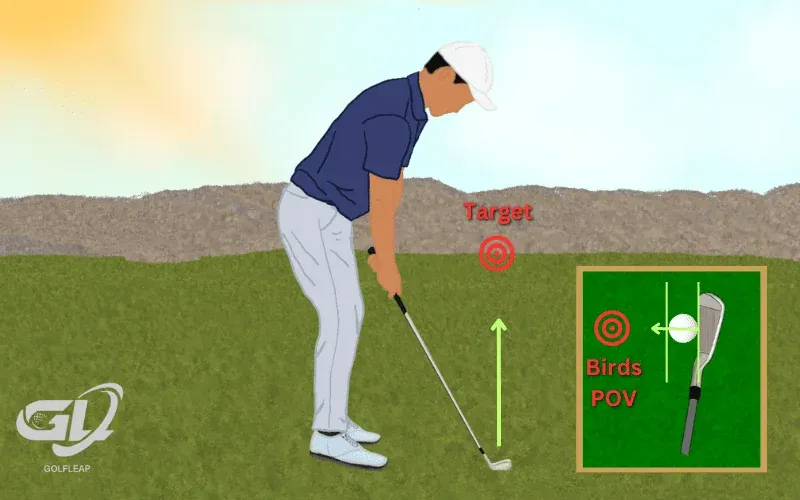
My goal finishing target for this shot was the right side of the green.
I aimed my club face “squarely” at this location when making my stance to give myself the best opportunity to hit it there!
A closer look at what this looks like from your point of view as you set up to the golf ball has the edge of the club face perpendicular to our target line. This helps square our club face!
Club Face Angle at Setup: Toe Up? Toe Down? Flush to the Ground?
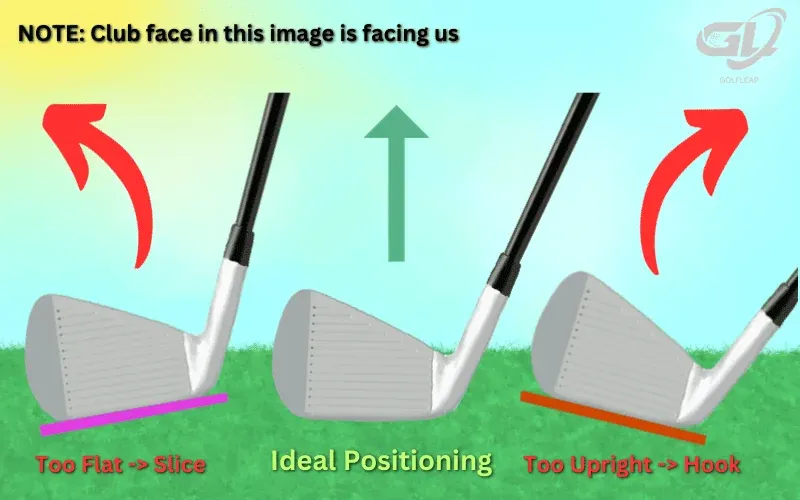
A common mistake most amateur golfers make in their setup with irons is placing the golf club too flat (toe side flush with the ground) or too upright (heel side flush with the ground) behind their ball.
Our downswing has so much force and torque that it changes the position our clubface contacts the ball at impact with (almost always pointing the toe-side of the club downward).
When the club is placed behind the golf ball “too flat” (toe side down) it’ll generally cause open-faced contact for slices, while “too upright” (toe side up) causes the hook. (Note, the image above shows the club face facing us so the arrow pointing left means a slice instead of a hook. These illustrations are for right handed golfers)
To find a balance between “too flat” and “too upright” with your irons at set-up, create your normal golf stance and lower the grip until the toe is pointed in the air (too upright).
Next, raise the grip until the toe is flush with the ground (too flat).
Lastly, find the middle point between these two positions. This creates the perfect club face angle at setup.
Best Golf Clubface Set-Up Drill
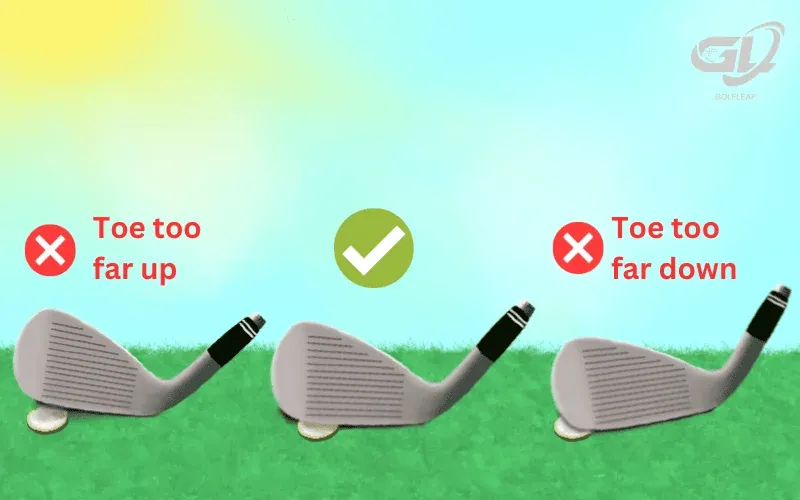
The best way we’ve discovered to practice the correct club face set-up position is by placing a coin under the toe side of our iron and creating our normal setup. With this drill, we want to make sure that the toe isn’t lifted away from the coin or pressing against it.
We want the toe to be just up enough that you’ll be able to make the start of your backswing without moving the coin from behind your ball!
Club Face Angle for Wedges
Wedges have enough loft and general forgiveness that they can be manipulated more than irons at set-up for a variety of shots.
Regardless, the only time you want the golf club completely flush to the ground is when you’re putting or hitting bunker/chip shots (once again, wedges have enough loft to allow this to happen).
Club Face Angle for Driver
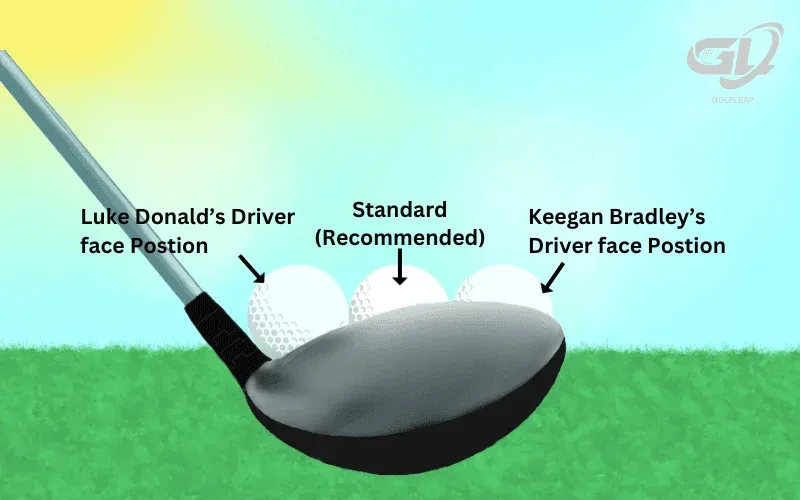
The driver surprisingly has tons of room for variety when creating your set-up.
Professional golfers like Luke Donald set up their driver head relatively “flat” with the ground and heel-biased, while players like Keegan Bradley seemingly align their driver “toe up” and toe-biased.
Finding what’s comfortable and repeatable for your golf swing is key to driver success!
Summary of Club Face Positioning
Mastering golf’s elusive consistency begins with precise clubface positioning during your setup. By ensuring your clubface is square to your target, you lay the foundation for successful shots. Understanding the nuances of clubface angle, whether with irons, wedges, or the driver, allows you to tailor your setup to your unique swing. So, by prioritizing correct clubface positioning, you can reduce those “helpless-feeling” days on the golf course and increase your chances of achieving the desired results with every swing.
